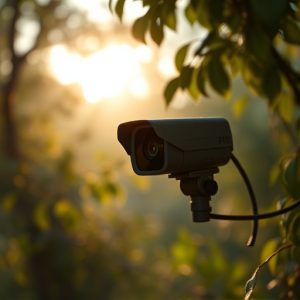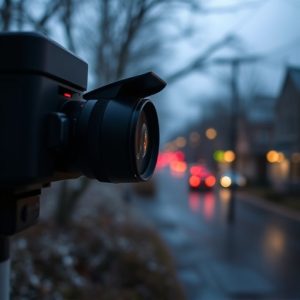Unveiling Hidden Cameras: Light-Based Identification Techniques for Home Security
In today's digital era, hidden cameras for home monitoring are common but raise privacy concern…….
In today's digital era, hidden cameras for home monitoring are common but raise privacy concerns. Disguised camera identification and strategic lighting usage help address these issues. Experts analyze visual cues and employ thermal imaging to detect hidden cameras. Despite advanced technology in everyday items, dedicated hidden cameras offer better detail capture. For optimal security, place cameras discreetly, use LED lights as signals, and implement regular firmware updates with encryption for protected footage.
In today’s digital era, hidden cameras for home monitoring have become a growing concern. The need for disguised camera identification is more critical than ever, as malicious actors employ intricate techniques to install surveillance equipment without detection. This article delves into the intricate world of identifying hidden cameras using light-based tests. We explore effective methods, common disguise loopholes, and best practices for enhancing home security while utilizing disguised surveillance systems.
- Understanding the Need for Disguised Camera Identification
- The Role of Lights in Uncovering Hidden Cameras
- Testing Methods for Detecting Disguised Surveillance Equipment
- Common Disguise Techniques and Their Loopholes
- Best Practices for Home Monitoring Using Disguised Cameras
Understanding the Need for Disguised Camera Identification
In today’s digital age, the prevalence of hidden cameras for home monitoring has become an increasingly common practice. While these devices offer valuable security and peace of mind, they also raise concerns about privacy and ethical considerations. Disguised camera identification is a critical aspect that addresses these issues, ensuring that individuals are aware of the presence of such surveillance equipment. This method allows users to verify the location and functionality of hidden cameras without compromising their personal spaces.
The need for effective disguised camera identification arises from the desire to maintain a safe yet private environment. Hidden cameras can be easily installed in various settings, from homes to public spaces, raising questions about data collection and consent. By employing specialized tests and techniques, individuals can proactively identify these devices, enhancing their control over their surroundings. This practice is especially pertinent for those concerned about privacy invasion, enabling them to take necessary precautions and ensure their security.
The Role of Lights in Uncovering Hidden Cameras
Lights play a pivotal role in identifying hidden cameras, offering a unique and often overlooked method for home monitoring security. When a room is well-lit, it becomes more challenging for covert surveillance equipment to remain concealed. The reflection of light off camera lenses or sensors can expose their presence, making them visible to the naked eye or through enhanced imaging techniques. This simple yet effective tactic disrupts the usual secrecy of hidden cameras, transforming common lighting into a powerful security tool.
In homes, strategically placing lights in strategic locations can significantly reduce the effectiveness of hidden cameras. Task lighting, for instance, can illuminate areas that might otherwise remain dark, making it easier to spot suspicious devices. Additionally, natural light from windows during the day and well-timed artificial lighting at night can create a dynamic environment where any unusual equipment stands out, aiding in their identification and deterring potential intruders seeking to install Hidden Cameras for Home Monitoring.
Testing Methods for Detecting Disguised Surveillance Equipment
Testing hidden cameras, especially those designed for home monitoring, requires a multi-faceted approach due to their covert nature. One effective method involves analyzing visual cues and patterns that might indicate the presence of surveillance equipment. This includes examining lights—their intensity, color temperature, and flicker rate—as modified by hidden cameras can provide telltale signs. Advanced testing techniques may employ specialized sensors or software that detect anomalies in lighting conditions, helping to identify camera-induced alterations.
Additionally, professionals utilize thermal imaging technology to spot heat signatures, as cameras often emit unique thermal patterns. Combining visual and thermal analysis increases detection accuracy. Moreover, regular maintenance and security audits can play a crucial role in identifying disguised cameras for home monitoring, ensuring peace of mind for homeowners concerned about privacy.
Common Disguise Techniques and Their Loopholes
Despite the advancements in technology, making hidden cameras nearly indistinguishable from everyday objects, several common disguise techniques still present loopholes that can be exploited by vigilant individuals. One of the most widely used methods involves integrating cameras into everyday items like light fixtures, smoke detectors, or even artificial plants. While these disguises may fool casual observers, they often lack sophisticated features that modern users expect from home monitoring devices. For instance, a poorly designed “smart” plant with a camera could be easily detected by its unusual behavior during power outages or inconsistent plant growth patterns.
Additionally, the use of lights as decoys is a popular tactic to deter potential intruders without raising suspicion. Motion-activated floodlights or strategically placed LED strips can create the illusion of constant surveillance. However, these methods rely heavily on external factors like motion detection algorithms and light sensitivity, which can be fooled by advanced users familiar with their limitations. Moreover, relying solely on lights as a disguise may not capture crucial visual details, leaving gaps in home monitoring capabilities compared to dedicated hidden cameras equipped with advanced sensors and high-resolution lenses.
Best Practices for Home Monitoring Using Disguised Cameras
When setting up hidden cameras for home monitoring, discretion is key. Place cameras in hard-to-see areas like corners or behind everyday objects to avoid detection. LED lights can serve dual purposes—illuminating your space and acting as a covert signal for camera activation. Opt for low-profile, energy-efficient lighting solutions that blend seamlessly with your decor.
Regularly update firmware and security protocols to ensure your hidden cameras remain untraceable and secure. Choose cameras with advanced encryption features to protect recorded footage from unauthorized access. Additionally, consider implementing motion detection alerts to receive instant notifications without revealing the camera’s presence.
Hidden cameras play a significant role in home monitoring, but their disguised nature poses unique challenges. Understanding how lights can reveal hidden surveillance equipment is crucial in combating sophisticated disguise techniques. By employing advanced testing methods and adopting best practices, individuals can ensure effective and ethical home security utilizing Hidden Cameras for Home Monitoring while mitigating potential privacy concerns.


